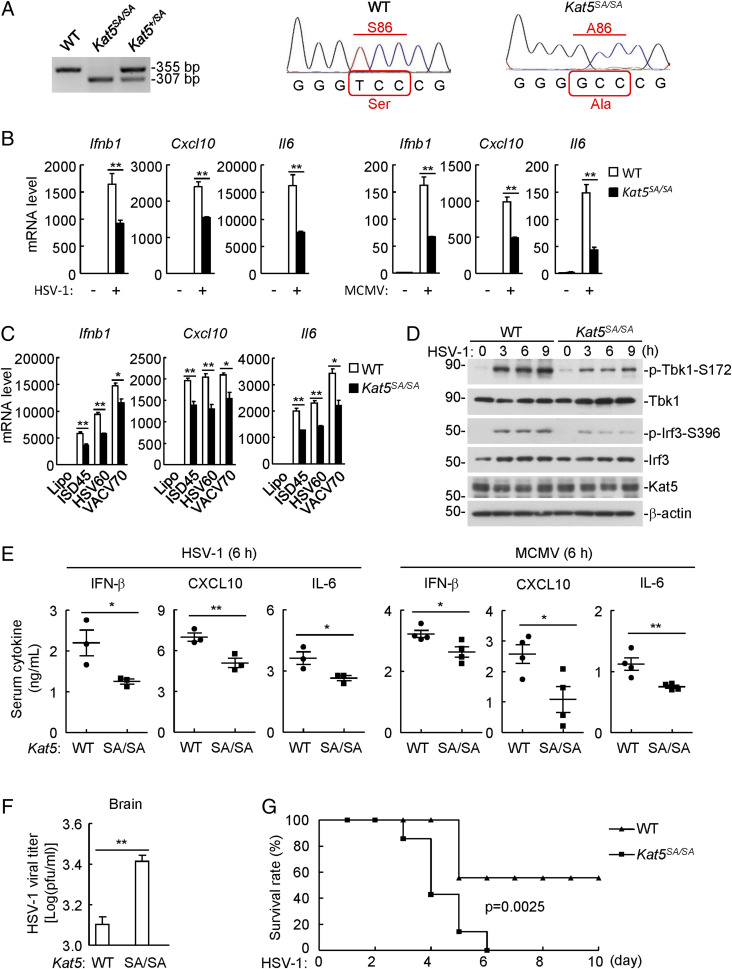Fig. 5.
KAT5 potentiates viral DNA-triggered innate immune response in vivo. (A) Genotyping of Kat5-mutated mice. The genomic DNA was extracted from wild-type, Kat5+/SA, or Kat5SA/SA knock-in mice and analyzed by PCR and DNA sequencing. (B) Inhibition of DNA-virus–induced transcription of downstream antiviral genes in Kat5SA/SA BMDMs. Wild-type and Kat5SA/SA BMDMs were left uninfected or infected with HSV-1 or MCMV for 6 h before qPCR analysis. **P < 0.01 (unpaired t test). Data shown are mean ± SD from one representative experiment performed in triplicate. (C) Inhibition of transfected DNA-induced transcription of downstream antiviral genes in Kat5SA/SA BMDMs. Wild-type and Kat5SA/SA BMDMs were transfected with the indicated dsDNA for 4 h before qPCR analysis. *P < 0.05, **P < 0.01 (unpaired t test). Data shown are mean ± SD from one representative experiment performed in triplicate. (D) Inhibition of DNA-virus–induced phosphorylation of Tbk1-S172 and Irf3-S396 in Kat5SA/SA BMDMs. Wild-type and Kat5SA/SA BMDMs were left uninfected or infected with HSV-1 for the indicated times before immunoblotting analysis with the indicated antibodies. (E) Serum levels of IFN-β, CXCL10, and IL-6 following DNA virus infection in wild-type and Kat5SA/SA mice. The mice (n = 3 or 4 per strain, 8 wk old, male) were infected with HSV-1 (3 × 107 plaque-forming units [PFU]/mouse) or MCMV (1 × 104 PFU/mouse) for 6 h before enzyme-linked immunosorbent assay. *P < 0.05, **P < 0.01 (unpaired t test). Data shown are mean ± SD from one representative experiment. (F) Viral titers in brain following HSV-1 infection in wild-type and Kat5SA/SA mice. Wild-type and Kat5SA/SA mice (n = 3 per strain, 8 wk old, male) were infected with HSV-1 at 3 × 107 PFU per mouse for 5 d. HSV-1 viral titers in the brains of infected mice were quantified by plaque assays. **P < 0.01 (unpaired t test). Data shown are mean ± SD from one representative experiment. (G) Effects of Kat5 mutation on HSV-1–induced death of mice. Wild-type and Kat5SA/SA mice (n = 7 per strain, 8 wk old, female) were infected intraperitoneally with HSV-1 at 5 × 107 PFU per mouse, and the survival of mice was monitored daily for 10 d. P = 0.0025 (log-rank test).

